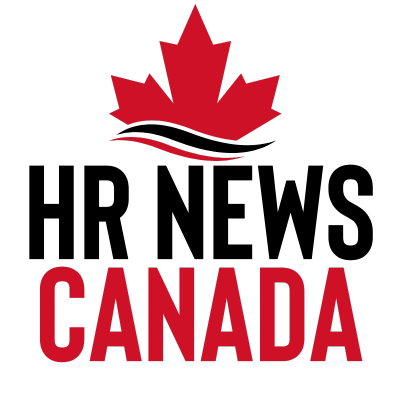About once a week, I pop onto the press release section of the Occupational Safety and Health Administration’s (OSHA) website as part of my regular workplace news scan. Inevitably, and unfortunately, there has always been a steady drumbeat of content — lessons and takeaways from serious workplace safety incidents in the United States that we would often write up and cover in HR News Canada and HR Law Canada.
But since Jan. 16, 2025, the website has gone silent. Since Donald Trump was sworn in as president, not a single press release has been issued. No OSHA bulletins announcing enforcement actions, no stories about what led to devastating injuries or fatalities on the job, and no cautionary tales for employers and workers alike to heed.
As a Canadian journalist who covers workplace issues, I find this shift troubling — because even if these incidents happen south of the border, the lessons are universal.
I have spent enough time on both sides of the border to appreciate that government agencies communicate differently, reflecting various legislative priorities, political climates, and cultural expectations. But safety is the ultimate universal language. The moment an employer fails to implement basic safeguards, no worker is safe — be they on an oil rig off the shores of Texas or on a construction site in downtown Vancouver.
An overloaded forklift can tip just as easily in Alberta as it can in Alabama. A blocked emergency exit is a hazard in British Columbia and in Michigan. Complacency is no less deadly in Toronto than in Tucson.
OSHA’s public releases long served as an education tool. They detailed the hazards behind tragic incidents and outlined citations so that workplaces everywhere could learn and, hopefully, prevent a similar scenario. An example appeared in OSHA’s second-to-last bulletin: An incident in Port St. Lucie, Fla., claimed the life of a 24-year-old worker when an overinflated inflatable pipe plug exploded. OSHA investigators found that Southeast Services of the Treasure Coast Inc. failed to develop procedures and train employees on how to safely install and remove pneumatic pipe plugs.
That lapse led to the tragic death of a Austin Falcon Rodriguez, a young man with the bulk of his life still ahead of him.
In its findings, OSHA identified a serious violation and proposed penalties of over $16,000. Before the silence set in, the agency broadcasted a critical reminder to all employers with pressurized equipment: “Pressurized equipment poses significant danger, and employers must put safeguards in place and take all necessary precautions to protect workers from these hazards,” said Condell Eastmond, OSHA’s Area Director in Fort Lauderdale, Florida. “If employers ignore critical safety measures, the consequences can be devastating, leaving an unfillable void in the lives of the families impacted by such tragedies.”
Those words underscore what’s at stake when OSHA retreats into silence. We’re losing what amounts to a blueprint for other companies to refer to in order to adjust their practices. It shows what corners were cut and where the vulnerabilities lay.
Now that such announcements are apparently no longer forthcoming, we’re left to speculate whether the administrative quiet is a temporary pause, a new policy under the Trump administration, or some other bureaucratic glitch. But in any of those scenarios, the result is the same: a gap in vital public information.
As a writer focused on the workplace, I sift through these documents and parse the official accounts for lessons that could spare another family from having to plan a funeral. Many occupational health and safety (OHS) professionals do the same. We count on agencies like OSHA to keep these tragedies front and center, if for no other reason than to remind us all — employers, workers, and even onlookers — of how quickly a routine day on the job can slip into unimaginable disaster.
By not highlighting details of workplace investigations, OSHA effectively pulls the curtain over valuable teaching moments. There are no new cautionary tales, no reminders of the fines or legal consequences. The effect ripples out: The public misses those sobering stories, reporters lose a direct line into critical developments, and other employers might miss the chance to reinforce training in time to prevent their own crisis.
It’s as though we’re suddenly told we can’t learn from the mistakes of others, and must wait for our own tragedy instead.
I want to believe this might be a temporary hiatus. Maybe the agency is reevaluating the content and timing of its releases, or coordinating with other branches of government. But I’m not hopeful despite that fact knowledge in this case is far more than power — it can literally save lives.
In the big picture, some might shrug and say these are dry government announcements that only attract the attention of lawyers, regulators, and the families of victims. But press releases represent a modern form of public record. They’re not the only source of information about workplace safety — but they are official statements that journalists, advocates, and safety professionals can turn to in real time. Even a short bulletin that announces a citation and penalty can serve as the start of a conversation that might prevent the next tragedy.
Silence, though, sends a different message: Indifference. If the government stops casting a light on the mistakes, the penalties, and the lessons — then bad actors might be emboldened. They won’t, after all, have their names publicized and suffer the reputation shame.
As Canadians, we may not be able to change U.S. policy. But we do share an interest in ensuring that information flows openly about any incident or hazard that can endanger human lives. The more the public hears about these stories — like the 24-year-old worker who lost his life due to an overinflated pipe plug — the more pressure there is on employers and regulators to maintain robust safety measures. In that way, we are all neighbors, and a decision by OSHA to stop releasing news is not just an American problem; it’s a global one.
For everyone’s sake, I hope this silence is temporary. Because if there’s one thing we know about workplace incidents, it’s that they’re never truly accidents. They’re the result of oversights that can be corrected if we keep the spotlight on each event, big or small, and remind ourselves how tenuous “routine” can be.
Silence doesn’t serve that effort. Shared understanding does.






